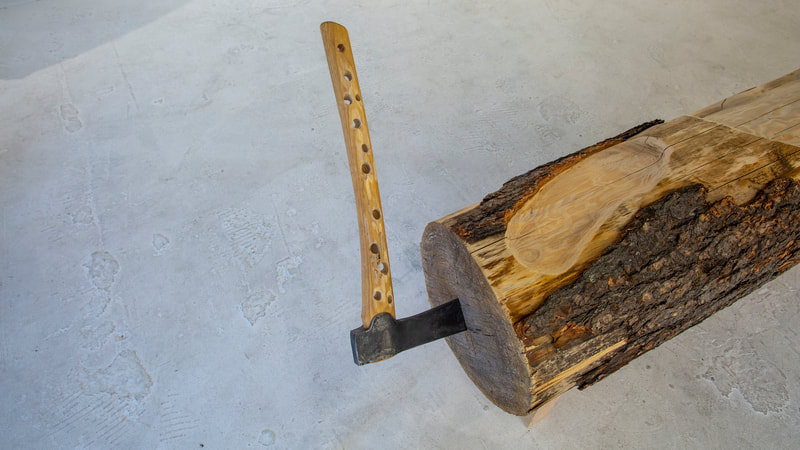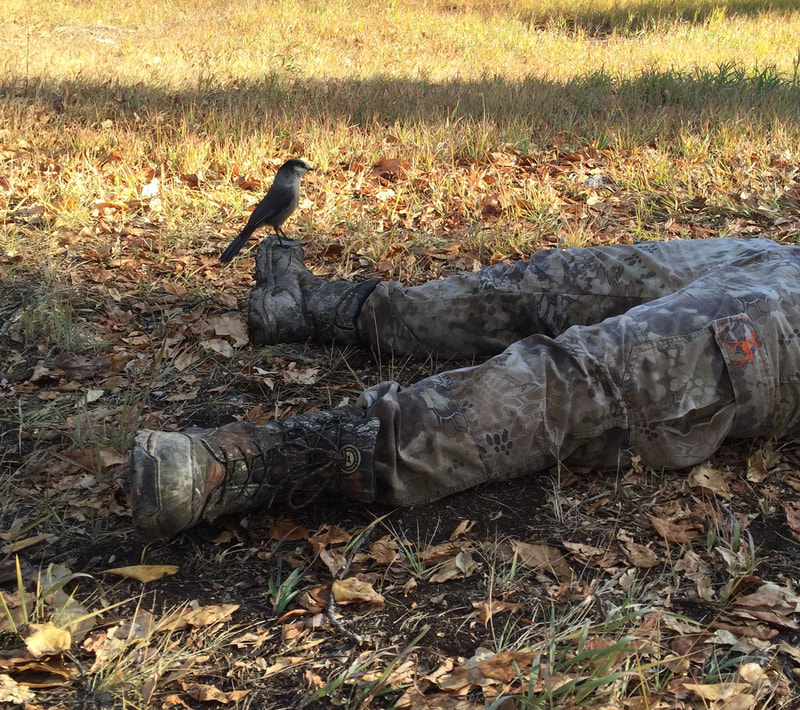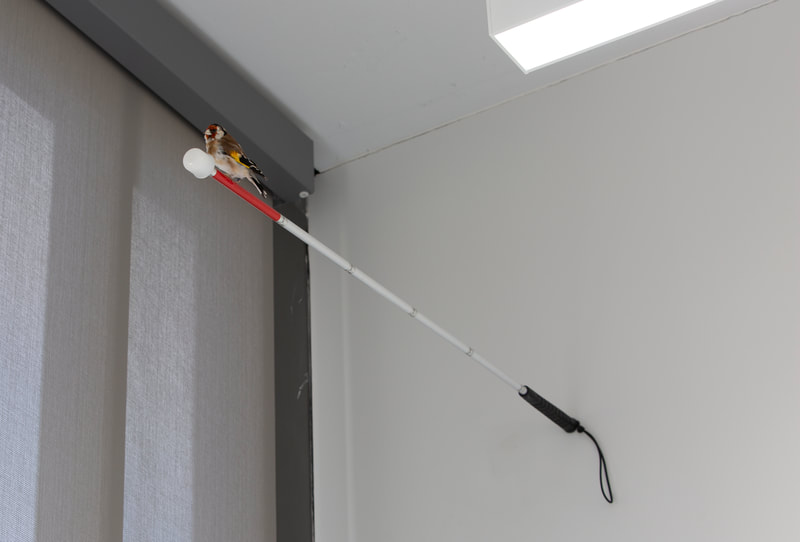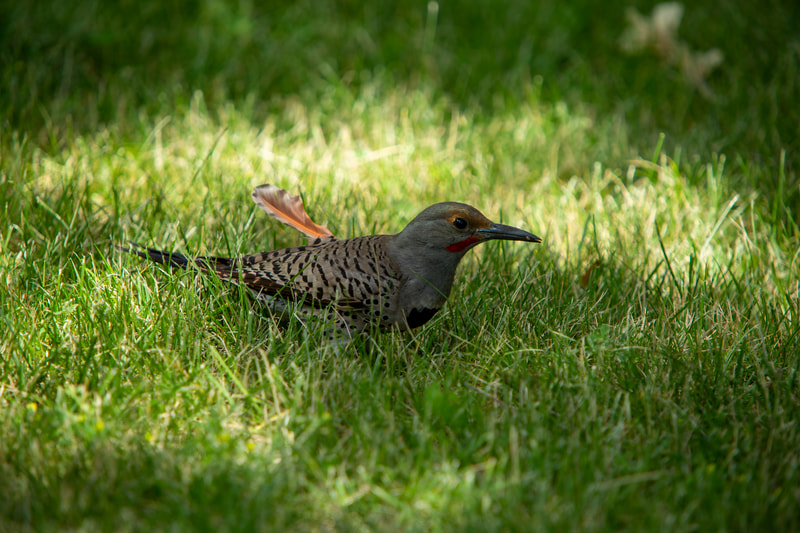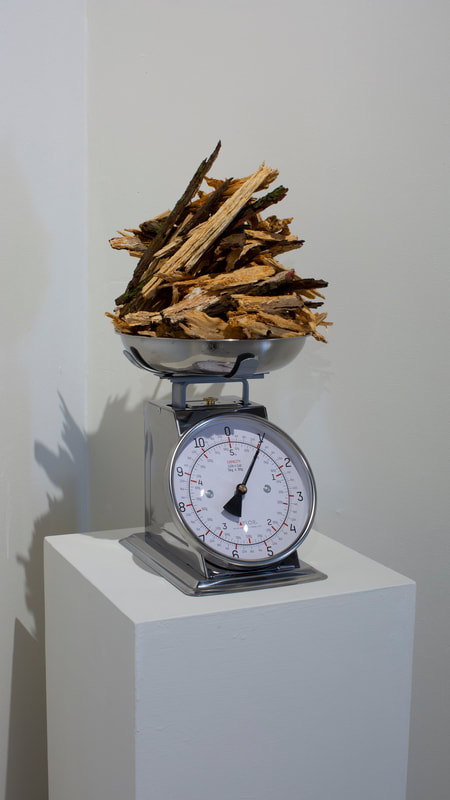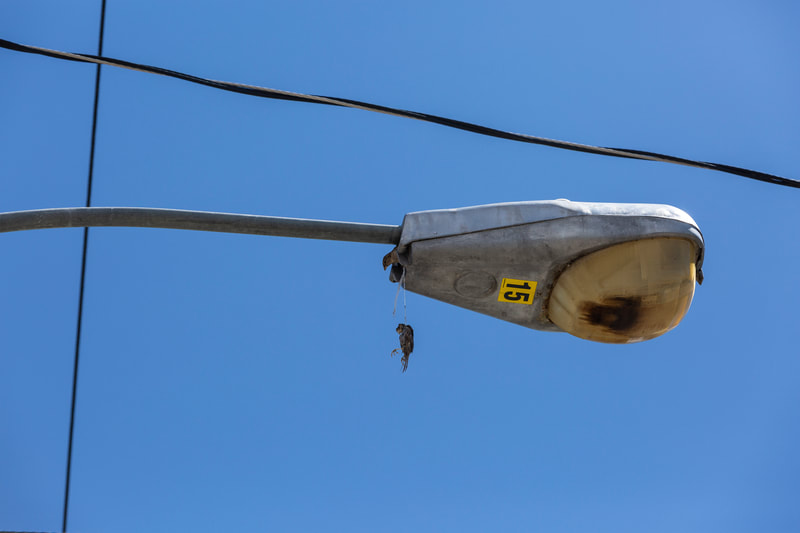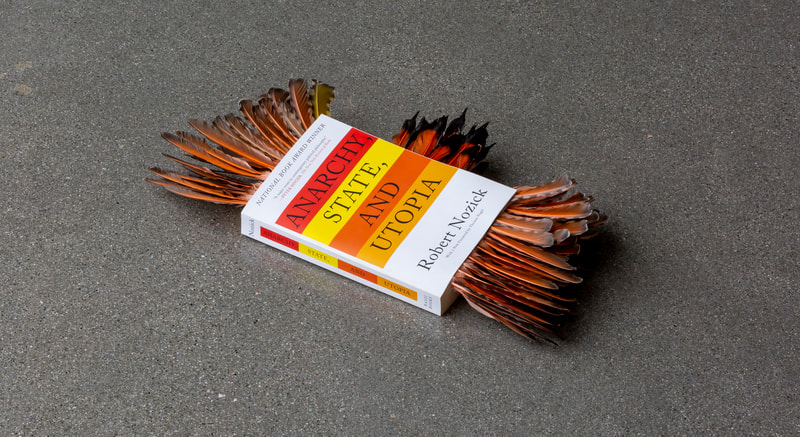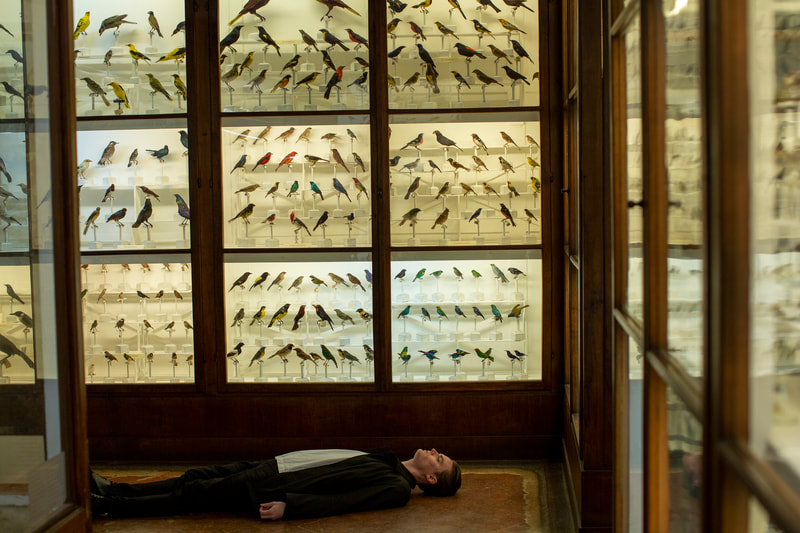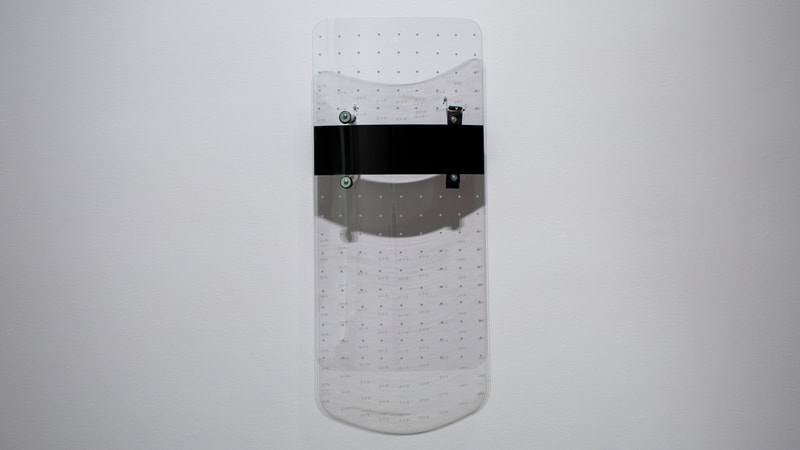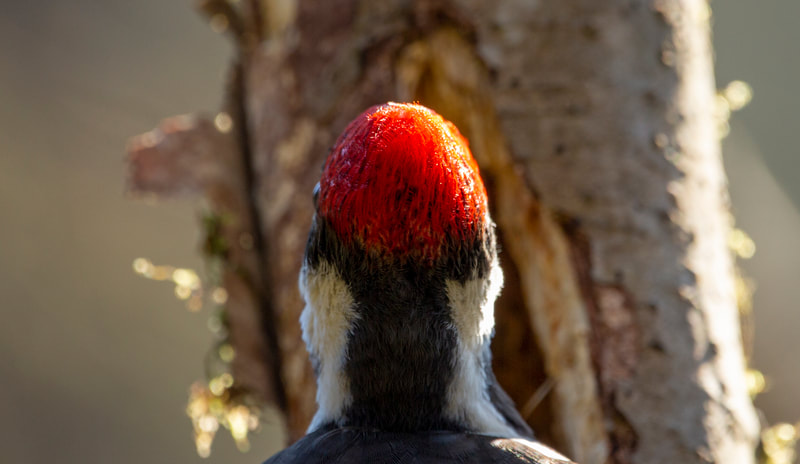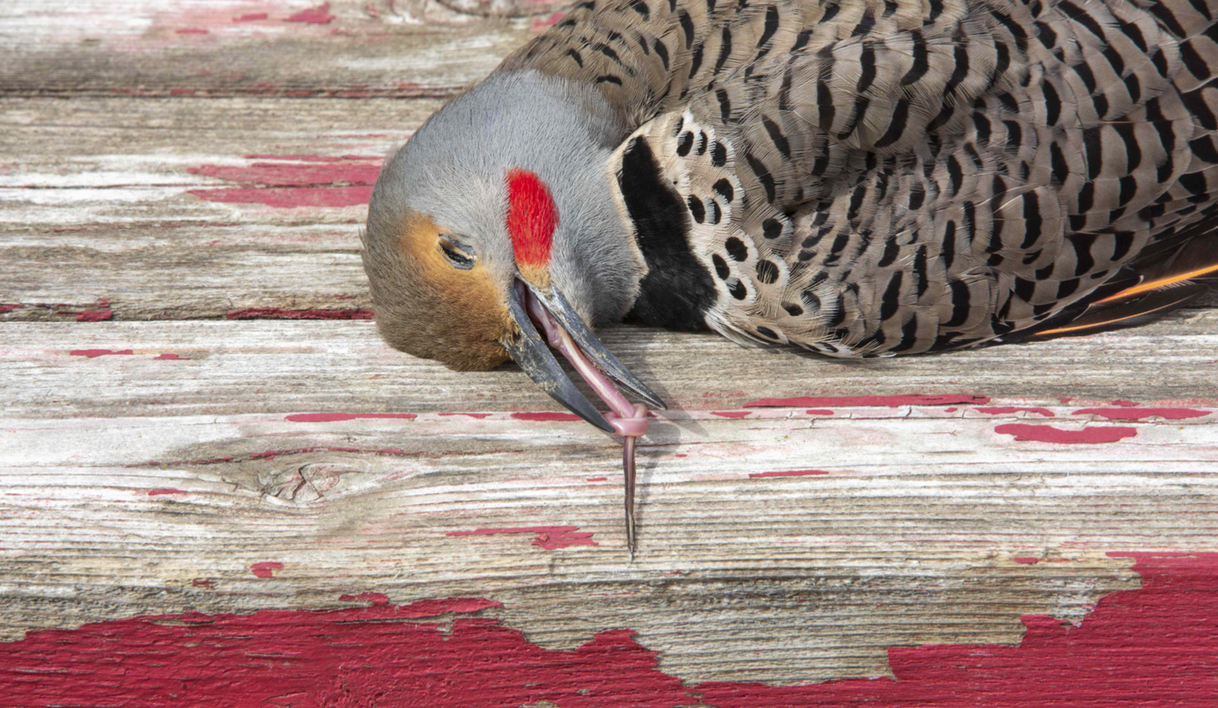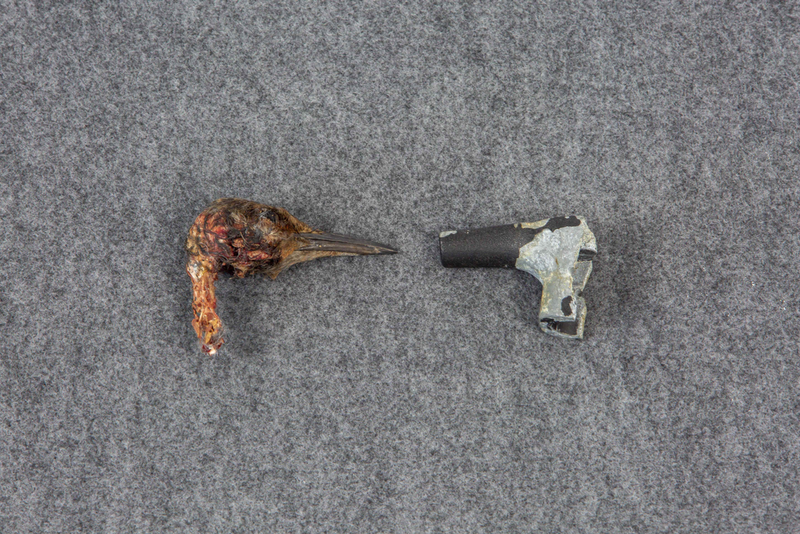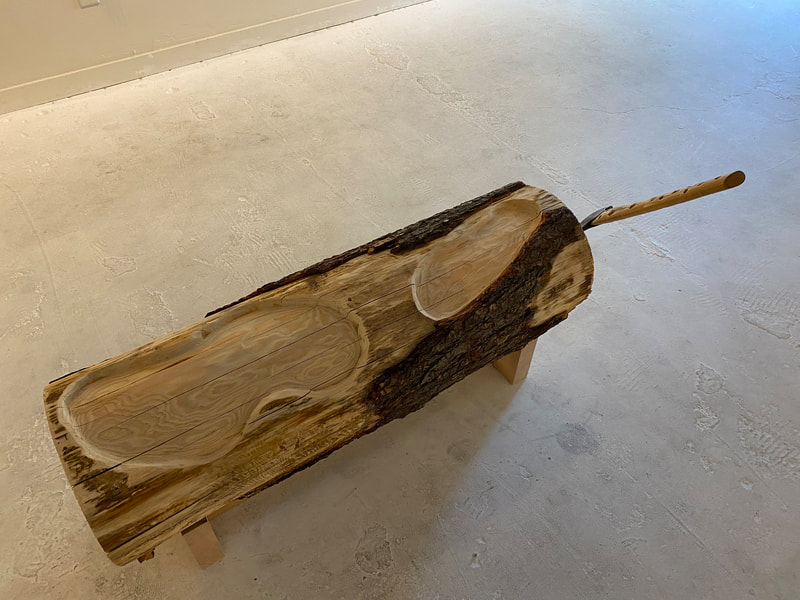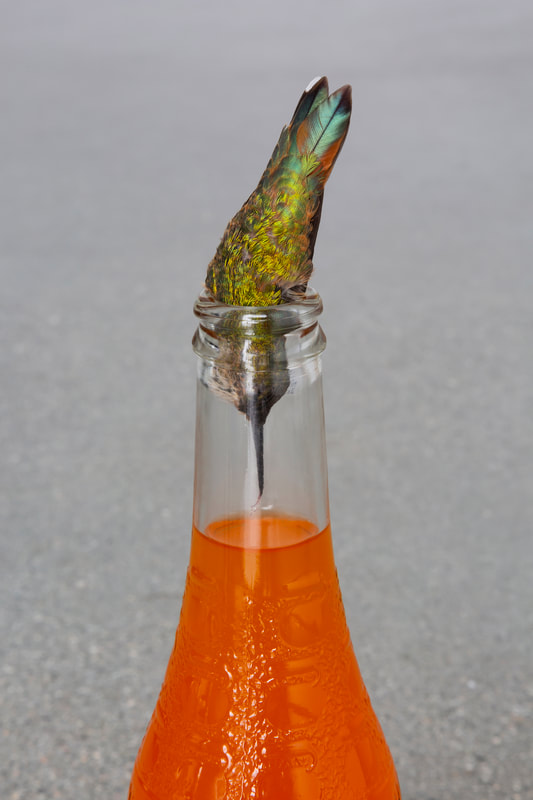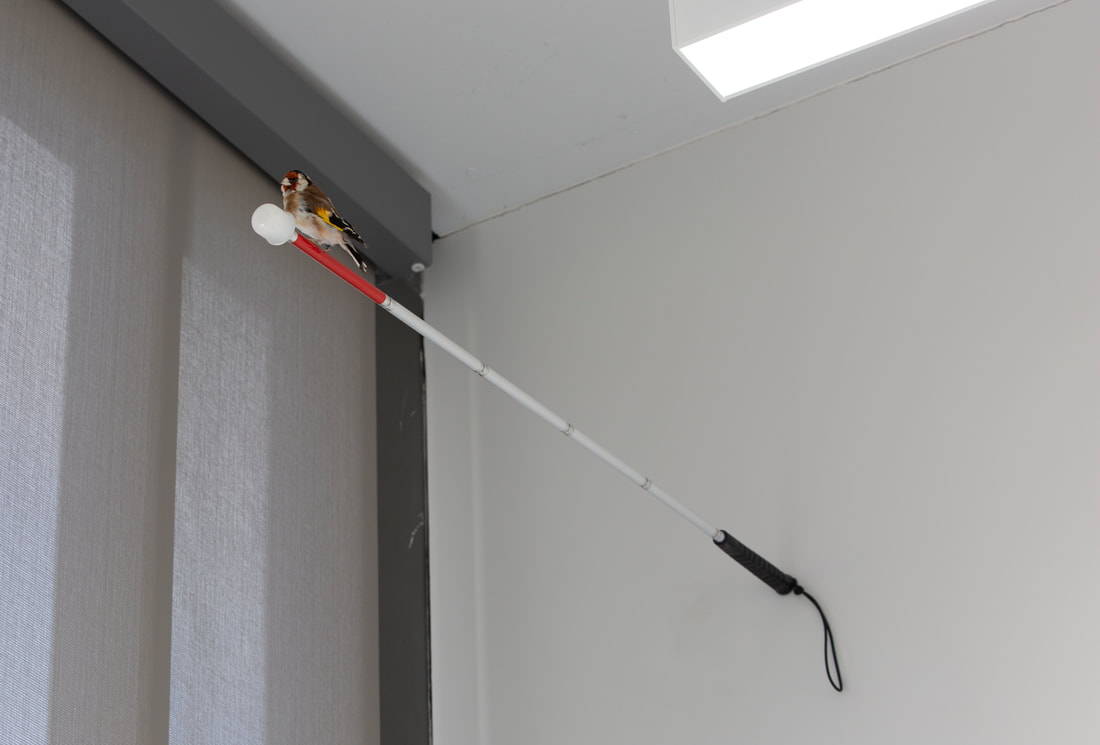Matthew Ballantyne
b. 1984
Matthew Ballantyne is an artist, poet and lapsed ironist. His work is preoccupied with birds despite their disinterest in him. His bird-focused works - from photographs to taxidermy, haiku emblazoned on flags to pieces made using found materials - reveal a search for empathy in an enchanted but tragic world.
Ballantyne's bird art releases his subjects from their standard frames, their "cages". His pieces call our attention to our anthropocentric presumption and ignorance, and the upshot is a surprising kindness toward his winged subjects.
He is an artist-naturalist hybrid. The artist and the birdwatcher share much in common. They observe and record. They are patient and persevering, expending long hours in wait. This is a passionate, personal search. Birds can become, as Ballantyne puts it, "poetic and haunting obsessions." Catching sight of a bird and adding it to one's life list is not the end of the story for him. He probes the ecology, natural history, and cultural situation, spotting unexpected linkages between avian and human domains.
His study elevates birds to a place in our consciousness that's greater than fluttering, chirping adornments of nature - and more than "merely ornamental objects for humans to exploit," as the artist notes. Like the birdwatcher, the artist has the capacity to see birds as feeling creatures with lives unto themselves, worthy of sustained attention. Birds may thrive for a season but the suffer, oftentimes by the hand of human negligence or cruelty. These artworks transcribe the artist's experience of seeing birds, both the quick and the dead, in urban and rural spaces, through history and culture, in image and metaphor.
"A man," wrote Ralph Waldo Emerson, "is measured by the angle at which he looks at objects." Emerson's dictum holds not only for inanimate things, but also for the way we observe the living. The birdwatcher's neck tilts and bends to glimpse an elusive bird. Ballantyne's angle on birds points us to the possibility of compassionate inquiry into other lives. And not just the lives of birds, but all creatures beneath the skies.
Matthew Ballantyne is an artist, poet and lapsed ironist. His work is preoccupied with birds despite their disinterest in him. His bird-focused works - from photographs to taxidermy, haiku emblazoned on flags to pieces made using found materials - reveal a search for empathy in an enchanted but tragic world.
Ballantyne's bird art releases his subjects from their standard frames, their "cages". His pieces call our attention to our anthropocentric presumption and ignorance, and the upshot is a surprising kindness toward his winged subjects.
He is an artist-naturalist hybrid. The artist and the birdwatcher share much in common. They observe and record. They are patient and persevering, expending long hours in wait. This is a passionate, personal search. Birds can become, as Ballantyne puts it, "poetic and haunting obsessions." Catching sight of a bird and adding it to one's life list is not the end of the story for him. He probes the ecology, natural history, and cultural situation, spotting unexpected linkages between avian and human domains.
His study elevates birds to a place in our consciousness that's greater than fluttering, chirping adornments of nature - and more than "merely ornamental objects for humans to exploit," as the artist notes. Like the birdwatcher, the artist has the capacity to see birds as feeling creatures with lives unto themselves, worthy of sustained attention. Birds may thrive for a season but the suffer, oftentimes by the hand of human negligence or cruelty. These artworks transcribe the artist's experience of seeing birds, both the quick and the dead, in urban and rural spaces, through history and culture, in image and metaphor.
"A man," wrote Ralph Waldo Emerson, "is measured by the angle at which he looks at objects." Emerson's dictum holds not only for inanimate things, but also for the way we observe the living. The birdwatcher's neck tilts and bends to glimpse an elusive bird. Ballantyne's angle on birds points us to the possibility of compassionate inquiry into other lives. And not just the lives of birds, but all creatures beneath the skies.
Past Exhibition at MRG
The Life of a Woodcutter | Matthew Ballantyne
In The Life of a Woodcutter, Ballantyne has collected recent works which take local woodpeckers as a starting point. Expanding out from his practice as a birdwatcher, the inspiration from his wanderings and chance, as well as telegraphed encounters with woodpeckers have found their forms in photographs, sculptures, textiles, and video.
Interested in their capacity for destruction and their reputations as nuisances, Ballantyne notes the tension between the petty scapegoating of woodpeckers and the endless justifications of human-based ecological ruin. Much of the work uses overlooked material and photographic traces of these birds in our shared environment to meditate on what it means to find creative impetus, unlikely connections, and moments of transcendence in overlooked places. These places could be splintered piles of dry rot, beak-pocked siding, or emptied-out tree trunks.
Spanning histories of amateur naturalism, conceptual art, wildlife photography, and poetry, Ballantyne blends these dispirit but complementary interests to think through the myriad joys, mysteries and heartbreaks involved in sustained attention to a group of beings who, despite our shared material entanglements, can seem to get along just fine without us.
Interested in their capacity for destruction and their reputations as nuisances, Ballantyne notes the tension between the petty scapegoating of woodpeckers and the endless justifications of human-based ecological ruin. Much of the work uses overlooked material and photographic traces of these birds in our shared environment to meditate on what it means to find creative impetus, unlikely connections, and moments of transcendence in overlooked places. These places could be splintered piles of dry rot, beak-pocked siding, or emptied-out tree trunks.
Spanning histories of amateur naturalism, conceptual art, wildlife photography, and poetry, Ballantyne blends these dispirit but complementary interests to think through the myriad joys, mysteries and heartbreaks involved in sustained attention to a group of beings who, despite our shared material entanglements, can seem to get along just fine without us.
Video about Matthew and his works by Mark Mushet for Galleries West
Video by Mark Mushet, 2022
Installation View | The Life of a Woodcutter
photo credit Rachel Topham Photography
Selected Work | Tantalus | 2019
|
Tantalus came to be after a friend alerted me to the presence of a female Roufus hummingbird that had struck the window of a bar in West Point Grey. I hopped on transit and hurried to the spot to see if the bird was still there. I found her, wrapped her in tissues, and headed back to my UBC studio. I took photos of the bird and knew its beautiful iridescent colours would inspire some project, though I wasn't sure what. I see hummingbirds in the field frequently, but having this sort of prolonged and direct access is rare. I sat with the shell of this small creature for the morning, looking closely at her incredible features now sad and inanimate, just contemplating how to do justice to her beauty while also capturing the profound loss of her death. I had kept a Robert Creeley collected poems on my desk, often cracking it open to stir something creatively or emotionally. I opened the book at random and landed on page 350; it read:
Joy I could look at an empty hole for hours thinking it will get something in it, will collect things. There is an infinite emptiness placed there. I read the poem a few times, letting it absorb slowly. I then looked at the hummingbird, her essence now evacuated, and felt like this was also a sort of "infinite emptiness." I then glanced at an empty soda bottle atop my desk. The bottle's mouth seemed now to demand to be filled–– one infinite emptiness replaced by another. I picked the bird up and placed her into the bottle top. I sensed something was happening and I followed the logic. What was missing was the drink. I ran down to the corner store near my studio and found a bright-orange mandarin Jarritos soda, a favourite of mine, imported from Mexico. The orange of the drink matched perfectly with the orange rufous plumage of the bird. It is important to note that hummingbird's feathers are mostly green and grey and largely unpigmented. Still, because of the intricate layering of dense but delicate fractal patterns, the ways light waves interact with the "lattice" of their feathers produce the vibrant, shimmering iridescent tones. The sunlight pouring into my studio at that moment was excellent, and adjusting the bottle at just the right angle brought out the vibrant shimmering greens, yellows and oranges. Shortly after shooting photographs of the bottle and bird, I had a studio visit with my graduate advisor. We talked about the accidental associations and iconographies of the image; she had mentioned how the bird had become an inadvertent Tantalus stand-in––a character from Greek mythology who was a mortal son of Zeus. Tantalus had stolen nectar from the table of the gods and distributed it to other humans. When discovered, he was punished by being placed in a pond for eternity. Each time he tried to lower himself to drink, the pond would drop just out of reach, and each time he would stretch for the fruit above him, swaying from trees at the pond's edge, the fruit would dance, ungraspable, forever out of reach. The punishment was a lesson not to blur lines between the world of mortals and gods. One of the details of the image that especially lends itself to the idea of the "tantalizing" is the bird's tongue, which has been forced out of the beak due to the trauma of the window strike and is dangling in the ullage, just shy of the liquid, implying the desire for the nectar was her undoing. I was also interested in the sad feature that, though this was an artificial tableau, the scene it suggests is not impossible. Hummingbirds are attracted by colour rather than scent. There is a distinct possibility of human refuse presenting dangerous, trap-like conditions. Hummingbirds regularly become stuck by the beak in backyard feeders or other human-made objects. The impact of human intervention on avian-life is tragic and ever-present, and much of my work attempts to present these uneasy dynamics. |
Matthew Ballantyne | Tantalus | 2019 | inkjet photograph in frame | 18x12 in. | Ed. of 5
|
|
Matthew Ballantyne | Blind Man' Stick (for Simone Weil) | 2020 | Collapsible cane, taxidermy goldfinch | 45.3 x 5 in.
|
Selected work | Blind Man's Stick (for Simone Weil) | 2020
|
